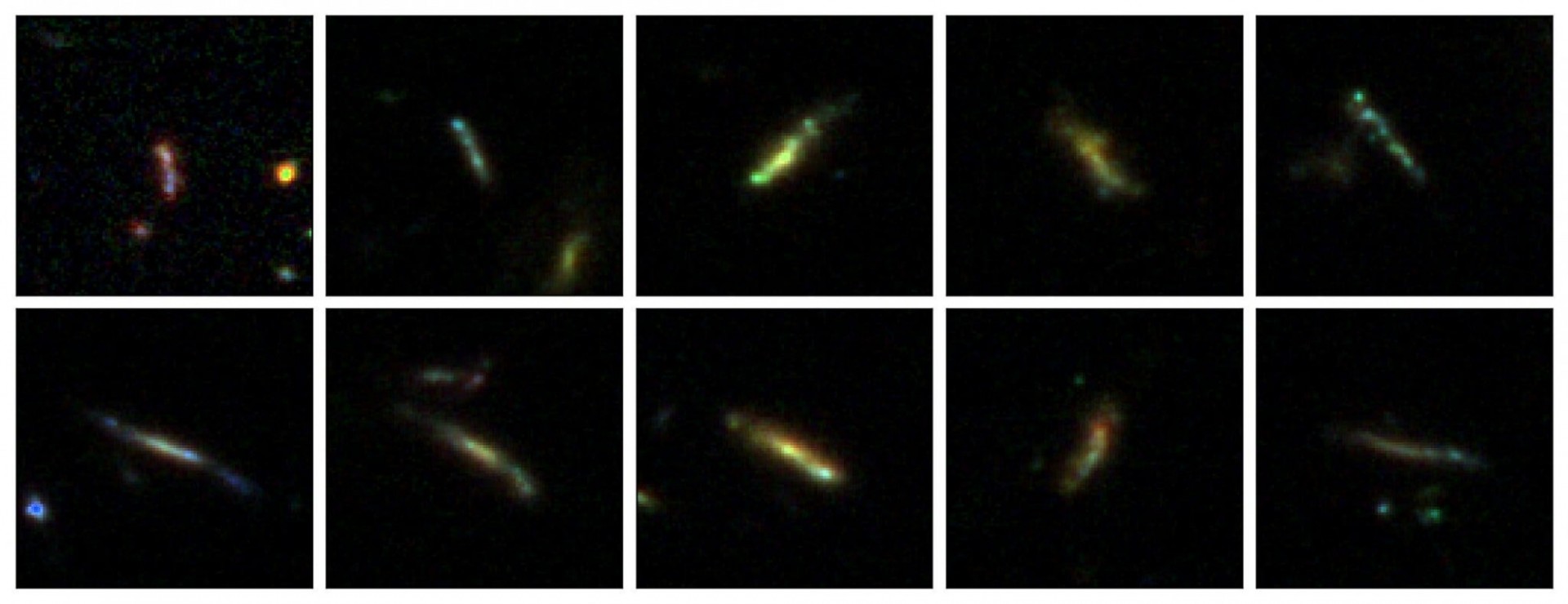An international team of astronomers led by Dr. Viraj Pandya, a NASA Hubble Postdoctoral Fellow at Columbia University, has used JWST Early Release Science observations from the CEERS Survey to infer the intrinsic 3D shapes of extremely distant galaxies, which are otherwise projected onto the 2D night sky. With its exquisite sensitivity, spatial resolving power and ability to see infrared light, the study found that JWST reveals many more flat, elongated galaxies than there are round, circular galaxies in the early Universe. This is both a surprising and unexpected result, although builds on previous work finding similar results. Some sample galaxies are shown in the attached figure, demonstrating very linear features, with some galaxies showing multiple bright clumps arranged like pearls on a necklace. The team also found many examples of more "normal" looking disk and spheroidal galaxies. Statistical modeling of the data strongly suggest a new class of exotic galaxies that, in 3D, are extremely flattened in two directions (like a cigar) as opposed to flattened in just a single direction (like a pancake). The researchers could not rule out that these galaxies may be disks, but if they are, then they must be unusually oval disks (like surfboards rather than circular pancakes) which is equally striking because it means galactic disks need to evolve from oval to more circular shapes with time. Such cigar- and surfboard-shaped galaxies are very rare today but the team found in the early Universe they make up ~50-80% of the population. Their masses are such that they would be the progenitors of galaxies like the Milky Way, implying that our own Galaxy may have gone through a similar cigar/surfboard morphological phase in its past. If one takes a population of cigar or surfboard shaped galaxies, measure their aspect ratios and lengths, and make a scatterplot of those aspect ratios vs. lengths, you would see a banana in that diagram -- this is a unique observable signature compared to a population of normal circular disks or spheroids.
A preprint of the paper is available here.

